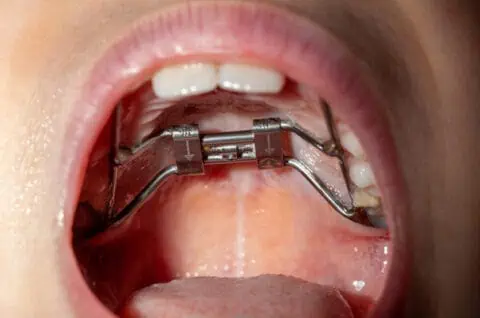Rapid Palatal Expander
Why is a Palatal Expander Important?

When is a Palatal Expander Needed?
This treatment is used when the upper jaw is too narrow to fit comfortably against the lower jaw; this results in a misaligned bite. Bite misalignments can cause several problems, especially for young children, including:
- Airway constriction
- Uneven wear on teeth
- Difficulty biting and chewing
- Difficulty pronouncing words and speaking clearly
- Crowded teeth are more difficult to clean and may develop cavities
How Does a Rapid Palatal Expander Work?
A rapid palatal expander is a small, delicate metal framework that fits into the top of the patient’s mouth. The two arms of the expander are attached to the inside of teeth with dental cement. This cement keeps the expander in place while it does its work. A small screw located in the center of the expander is gradually tightened over the course of treatment. It is turned with the help of a special key. A gentle pressure on the left and right sides of the upper jaw allows the palate tissues to move into the correct position. The connective tissue in the mouths of young patients is quite responsive to this treatment; bone growth will increase where the two halves meet and fix the new width in place. Once the palate has expanded to the correct position, the expander is held to stabilize, then removed after turns have completed. Various types of follow up treatment might be required once the expander has been removed and our team at Braces520 will work with you and your child to help you understand any next steps.
How To Turn The Palatal Expander
To turn you or your child’s palatal expander, insert the key into the hole of the screw mechanism on the expander and push towards the back of the mouth. Once you see the next hole appear, you’ll know the turn is complete. Click here for more detailed instructions.








